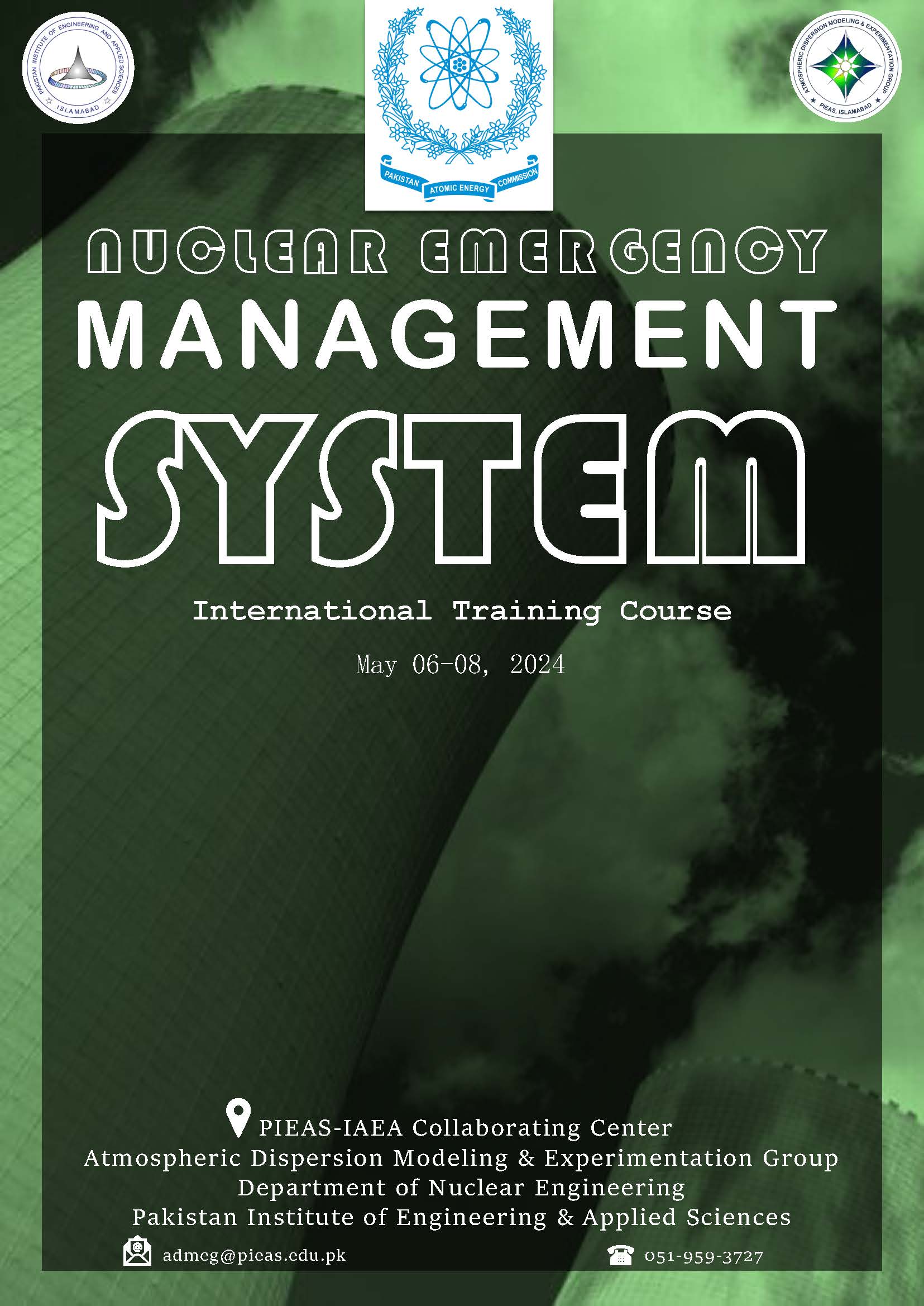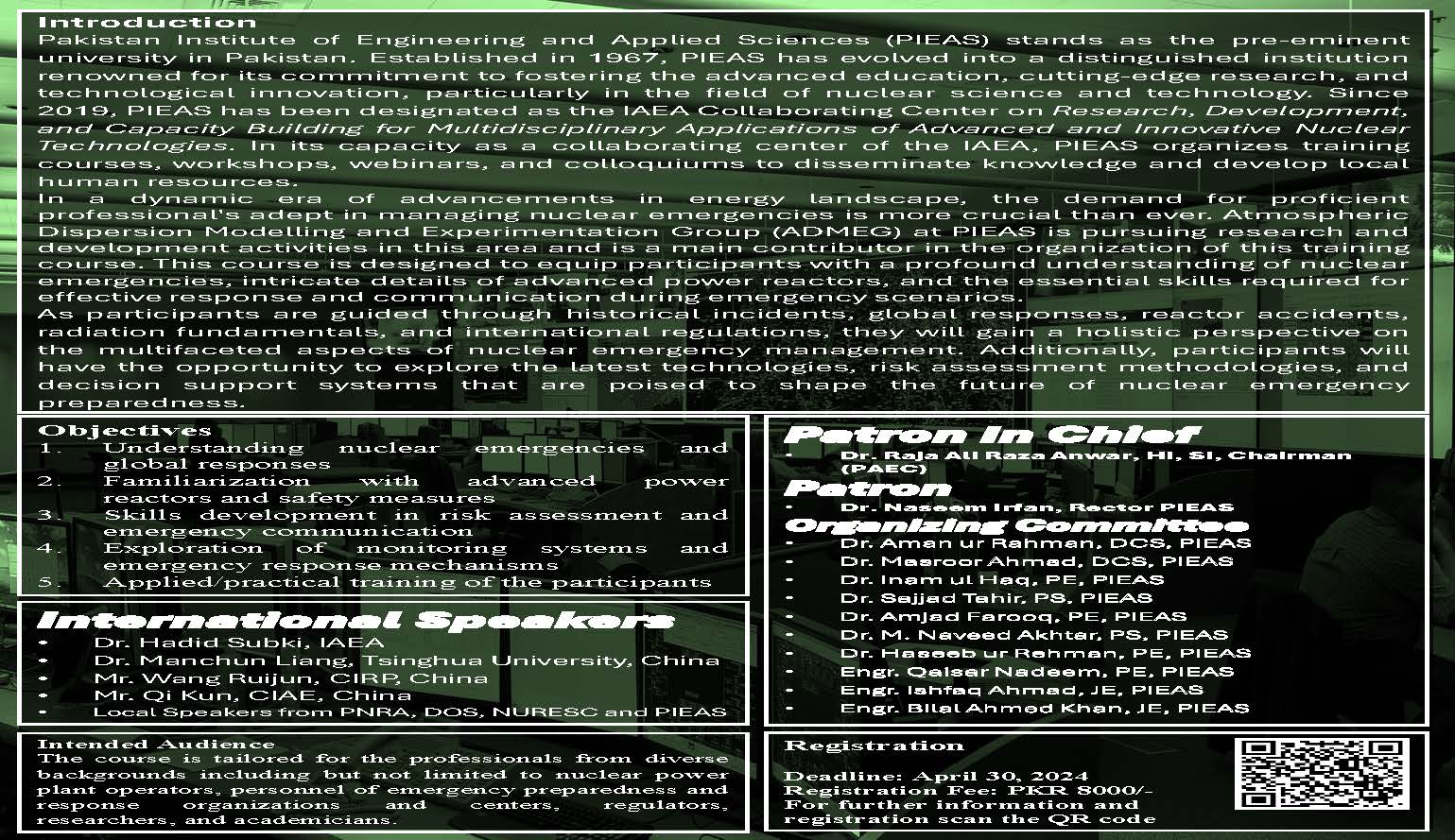-
 Date: Monday, 06 May, 2024
Date: Monday, 06 May, 2024 -
Venue: PIEAS
International Training Course on Nuclear Emergency Management System
Pakistan Institute of Engineering and Applied Sciences (PIEAS) stands as the pre-eminent university in Pakistan. Established in 1967, PIEAS has evolved into a distinguished institution renowned for its commitment to fostering the advanced education, cutting-edge research, and technological innovation, particularly in the field of nuclear science and technology. Since 2019, PIEAS has been designated as the IAEA Collaborating Center on Research, Development, and Capacity Building for Multidisciplinary Applications of Advanced and Innovative Nuclear Technologies. In its capacity as a collaborating center of the IAEA, PIEAS organizes training courses, workshops, webinars, and colloquiums to disseminate knowledge and develop local human resources.
In a dynamic era of advancements in energy landscape, the demand for proficient professional's adept in managing nuclear emergencies is more crucial than ever. Atmospheric Dispersion Modelling and Experimentation Group (ADMEG) at PIEAS is prsuing research and development activities in this area and is a main contributor in the organization of this training course. This course is designed to equip participants with a profound understanding of nuclear emergencies, intricate details of advanced power reactors, and the essential skills required for effective response and communication during emergency scenarios.
As participants are guided through historical incidents, global responses, reactor accidents, radiation fundamentals, and international regulations, they will gain a holistic perspective on the multifaceted aspects of nuclear emergency management. Additionally, participants will have the opportunity to explore the latest technologies, risk assessment methodologies, and decision support systems that are poised to shape the future of nuclear emergency preparedness.
In a dynamic era of advancements in energy landscape, the demand for proficient professional's adept in managing nuclear emergencies is more crucial than ever. Atmospheric Dispersion Modelling and Experimentation Group (ADMEG) at PIEAS is prsuing research and development activities in this area and is a main contributor in the organization of this training course. This course is designed to equip participants with a profound understanding of nuclear emergencies, intricate details of advanced power reactors, and the essential skills required for effective response and communication during emergency scenarios.
As participants are guided through historical incidents, global responses, reactor accidents, radiation fundamentals, and international regulations, they will gain a holistic perspective on the multifaceted aspects of nuclear emergency management. Additionally, participants will have the opportunity to explore the latest technologies, risk assessment methodologies, and decision support systems that are poised to shape the future of nuclear emergency preparedness.









